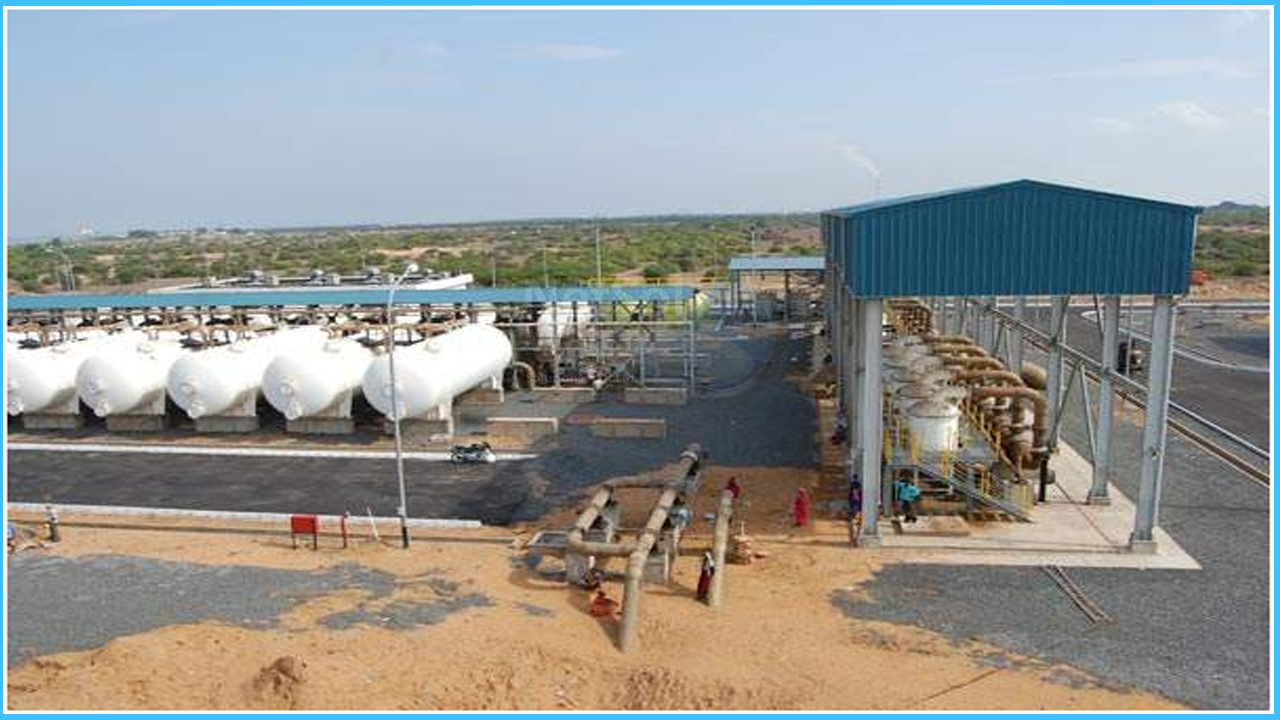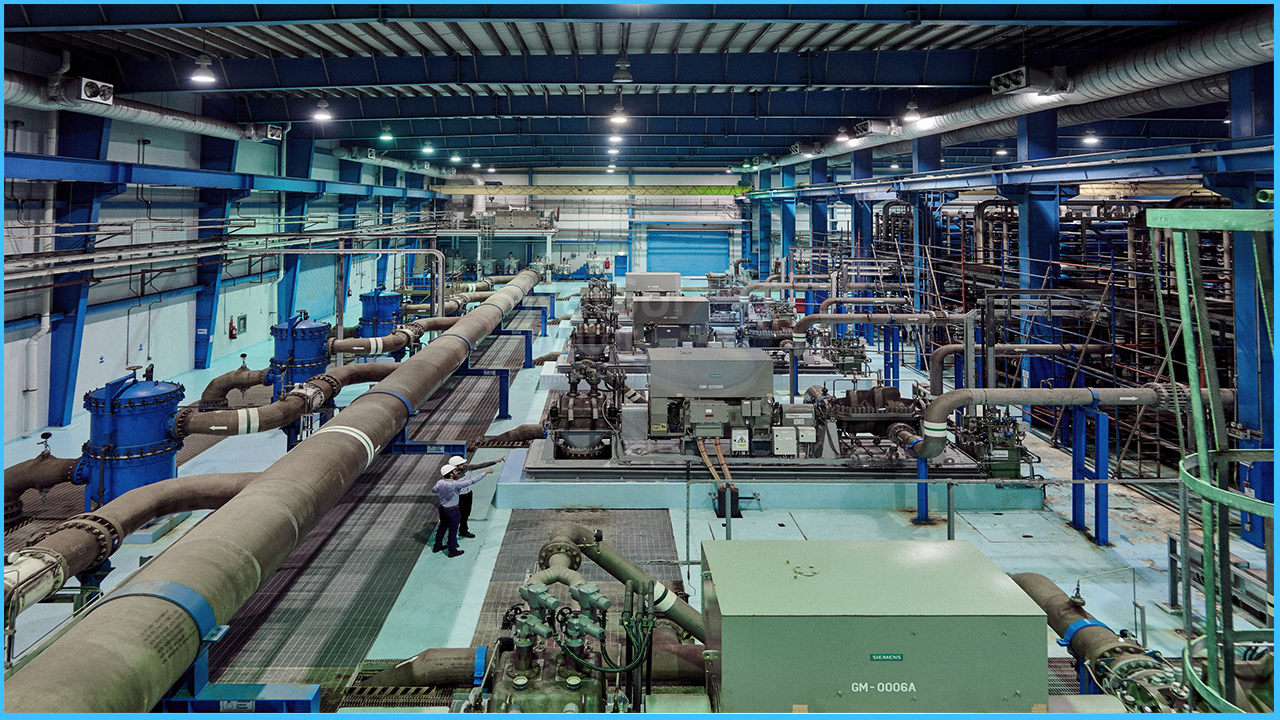WHAT IS A DESALINATION PLANT?
Adesalination plant converts salt water into potable water. Reverse osmosis is the most often used method for the process, which involves applying external pressure to force solvents through a membrane from a high-solute concentration portion to a low-solute concentration area. The membranes' small holes allow water molecules to pass through while leaving salt and most other contaminants behind, resulting in clean water being released on the other side. The majority of these plants are located in places with access to sea water.
How wide is the usage of Desalination plants in India?
Desalination has been primarily limited to wealthier Middle Eastern countries, although it is also making advances in portions of the United States and Australia. Tamil Nadu was the first in India to use this technology, constructing two desalination facilities near Chennai in 2010 and 2013. Both plants produce 100 million litres per day (MLD) for Chennai. In Chennai, two additional plants are slated to be built.
Gujarat has proposed a 100 MLD RO plant in Jamnagar district, among the other states that have suggested these plants. Desalination plants are also being proposed at Dwarka, Kutch, Somnath, Bhavnagar, and Pipavav, all of which are coastal areas in Gujarat. Andhra Pradesh is also planning to build a plant.
INDIA’S LARGEST DESALINATION PLANT

Minjur Desalination Plant is the largest Desalination Plant in India. The Minjur Desalination Plant is a reverse osmosis water desalination plant that delivers water to the city of Chennai. It is located in Kattupalli village, a northern suburb of Chennai, India, on the coast of the Bay of Bengal. It is India's largest desalination facility, with a 60-acre footprint. Under the supervision of Project Manager Fernando Portillo Vallés and Construction Manager Juan Ignacio Jiménez-Velasco, who returned to Europe after the plant's inauguration to work on renewable energy projects, construction work was carried out by the Indian company IVRCL and the Spanish company Abengoa.
The plant was supposed to open in January 2009, but it was delayed owing to Cyclone Nisha in October 2008, which damaged a portion of the finished maritime works and wrecked the cofferdam that was supposed to be used to install the transition pipes. The facility was launched in July 2010 after testing runs were finished in June 2010. The plant's water will mostly be used for industrial reasons, including the Ennore Port and the North Chennai Thermal Power Station. During droughts, however, water from the facility will be distributed to the public, serving a population of 1,000,000 people.
OPERATION PROCESS
The plant uses reverse osmosis (RO) technology to desalinate sea water, which contains up to 6.4 ppm aluminium and 50 NTU of turbidity. By recovering kinetic energy from the brine solution and transferring it to the desalinated water that has gone through the osmotic membrane, energy recovery units help to improve the system's efficiency.
Coagulation-flocculation, gravity, and pressure filtration are all used to pre-treat raw sea water. The filtered water is then pumped to the facility, where it is subjected to a series of pre-treatments before passing through the RO trains. The water is then pumped at high pressure through the RO membranes.
MINJUR DESALINATION PLANT DESIGN AND SEA WATER TREATMENT PROCESS |
This desalination plant at Minjur is made up of 8,600 seawater RO membranes, 248 pressure vessels, 23 pressure exchangers, five high-pressure pumps, 16 pressure filter vessels, electrical, automation, and control systems, and 1200m of 1600mm diameter HDPE pipelines.
The CMWSSB has built a 33-kilometer pipeline to transport treated fresh water from Minjurto Red Hills at a cost of INR930 million ($20 million). Infrastructure for collecting seawater is also part of the project. The Tamil Nadu Electricity Board has built a 110kV/22kV sub-station to ensure that the desalination plant receives uninterrupted electricity.
To determine the impact of the plant on the livelihoods of fishermen and other communities, a complete environmental impact study was done. Prior to the plant's construction, studies were undertaken on the impact of high saline discharge on fisheries and turtle nests.
HOW DOES IT WORK?
Coagulation-flocculation, gravity, and pressure filtering are used to pre-treat raw sea water that contains up to 6.4ppm aluminium and roughly 50NTU of turbidity.
The water is pumped to the plant once it has been filtered. It goes through a series of pre-treatments here before being sent via the RO trains. High-pressure water is pumped through the RO membranes. The desalinated water passes through the membranes, which retain the salts.
The RO system's ultimate water product goes through a post-treatment process. Fresh water is flavoured and kept in a 20-ml subterranean water tank. After there, it's pumped into the Red Hills reservoir before being released into the metropolitan grid.
The plant's RO technology produces 100 million litres of desalinated water from 273 million litres of sea water.
SECOND LARGEST DESALINATION PLANT
The second-largest plant, with a capacity of 96,000 m³/day, is located in Jamnagar, Gujarat.
This desalination plant costs INR5.15 billion (€91 million) -100MLD. The plant uses reverse osmosis (RO) technology to generate potable water for Gujarat’s residents.




